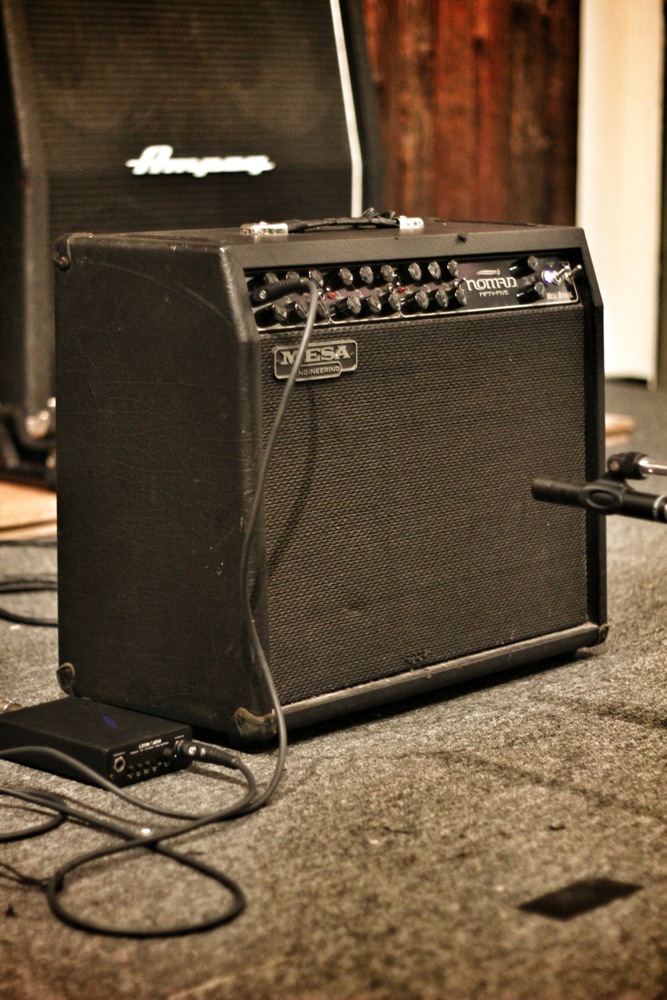 Be sure to check out Ben's Reamping Techniques tutorial video for even more info on taking your DI sounds out of the box (and then back into the box).
Be sure to check out Ben's Reamping Techniques tutorial video for even more info on taking your DI sounds out of the box (and then back into the box).
Anytime you send a track 'out of the box' and run the sign al through something and record the result, that's reamping. This can range from sending a guitar DI signal out into a real guitar amp, feeding a bass track through a vintage compressor (overdriving the input transformer and tubes of course to add extra vibe), running the vocal track through a guitar pedal, or even sending the drum mix to a speaker in the stairwell.
The possibilities of reamping are only limited to what you can dream up (I always keep my ear peeled to pick up ideas from other engineers too). Remember, reamping isn't an exact science, it's a creative endeavor so always be trying to do something different with it.
Why bother Reamping?
Honestly, I don't always take the time to really reamp things, I often plan on doing it, but end up just using plugins to get the sound I'm looking for, which is fine for most songs. But, when I have the time to actually hook everything up, I always love the sounds I'm able to create by reamping. Without the pressure of also trying to capture the performance, I can really focus on the tone and make sure my reamped tracks fit perfectly in the song. It's also a great chance to experiment, playing with mic selection and placement is even easier when you are working with a perfectly consistent source. As with everything I do, I'm trying to be as creative as possible, when reamping I like to try out new combinations that I may not normally do during a client's session. When I find something cool, I put it in the memory bank as something I can pull out next time I'm in a session and want that sound again.
How do I do it?
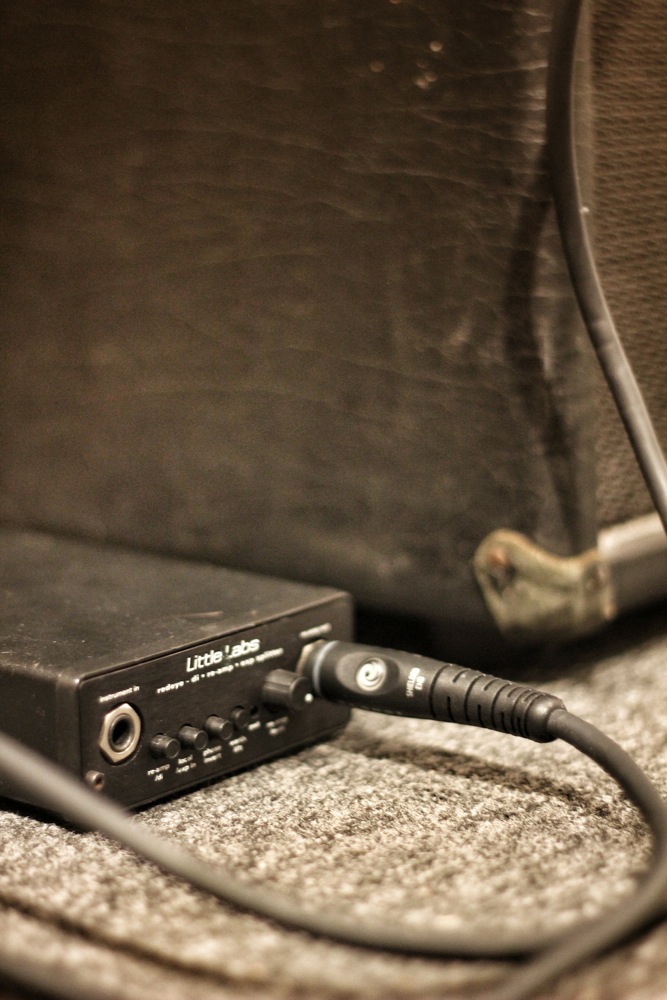 The output from your interface is at the wrong level and impedance to just plug it straight into an amp or pedal. Remember there's no rules in recording so feel free to try just plugging it in, but do so cautiously, your interface is at a much higher output level than most guitar amps are expecting, I'd hate for someone to accidentally blow a precious amp up. I prefer to use a dedicated box to handle the conversion down to instrument level. The Little Labs Redeye is a great one that I use, but there are a bunch of other ones made my Radial as well as other companies, but you can also just use a passive DI box backwards (albeit with less controls that are helpful sometimes).
The output from your interface is at the wrong level and impedance to just plug it straight into an amp or pedal. Remember there's no rules in recording so feel free to try just plugging it in, but do so cautiously, your interface is at a much higher output level than most guitar amps are expecting, I'd hate for someone to accidentally blow a precious amp up. I prefer to use a dedicated box to handle the conversion down to instrument level. The Little Labs Redeye is a great one that I use, but there are a bunch of other ones made my Radial as well as other companies, but you can also just use a passive DI box backwards (albeit with less controls that are helpful sometimes).

To get started, set the output of the track you want to reamp to an extra output on your interface, patch the output from the interface to the reamping box, connect the reamping box to the amp, and you're ready to rock. I like to find a loop in the song and then head out to the live room and start tweaking the tone on the amp. Once it's sounding good in the room it's time to start playing with the microphones. Since you have perfect isolation, reamping gives you the flexibility to place microphones wherever your heart desires, you aren't stuck putting the mic right up on the grill (unless that's the sound you're going for). I like hearing a little more space whenever possible so I usually start with the mic a foot or so back and maybe even a second room mic to capture all the interaction and vibe of the room. I'm constantly going back and forth from the control room to the live room to get the sound just right, since I'm able to focus on just getting this one sound I can afford to be picky, but I'm also always checking to make sure what I'm recording also sits well in the mix, there's not always space for every part to sound HUGE even though it's tempting to do so when reamping and listening to parts in solo. Once everything is in the right place and sounding great all that's left to do is press record and let it run through the song.
Now If you're just getting creative with your studio-level (+4dBu) gear instead of going into an amp, the only difference is there's no need to use a level convertor, just patch in your vibey-est gear and let loose.
What does it sound like?
In a nutshell, it sounds real. Here's some examples I've recently reamped.
Guitar
Here's a snippet of a guitar track, first the raw DI signal.
Here's the plugin amp simulator sound I've been working with, which sounds good.
And finally the reamped track, I added a little delay to the signal I sent to the amp.
Quite a difference right? I love how the reamped track is crunchy but with some life to it. So what was my signal path? This track started with my Telecaster running into the Demeter Tube DI box connected to a DBX 386 pre and into my Digidesign 192. Then for reamping the signal traveled out of a Digidesign 192 into the Little Labs Redeye then into a Mesa Boogie Nomad 55 on the clean channel with the 'Pushed' switch flipped. I recorded it with a Beyerdynamic M 201 TG about a foot away going through one of my custom germanium preamps and combined that with a Neumann U87 in omni a bit further away running though an API 3124 preamp and into an 1176 to maximize the room tone.
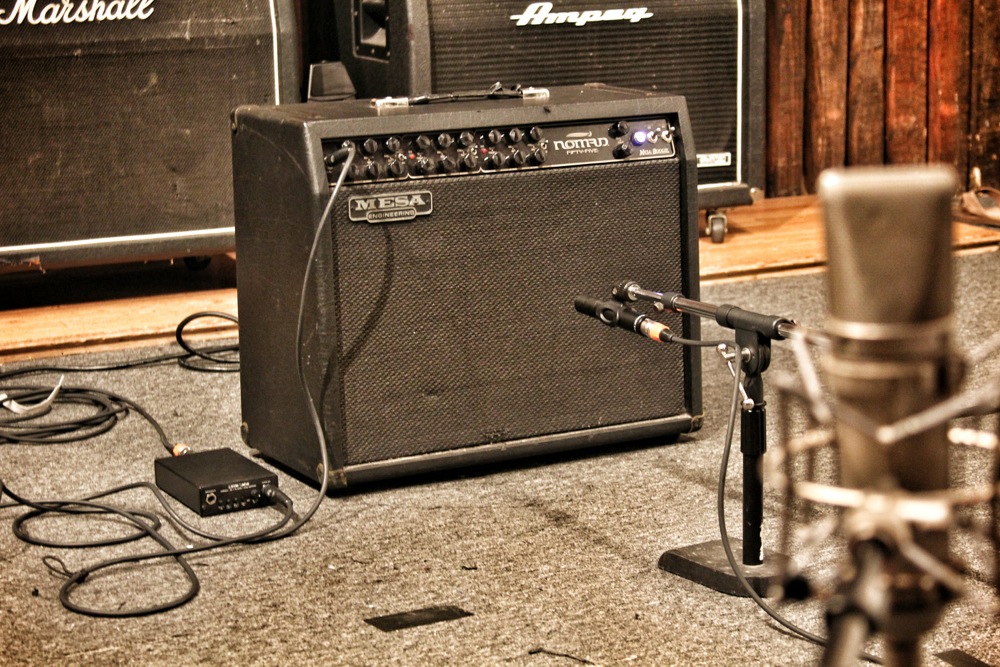
Bass
I'd say it's a fair bet that 80% of the time I just use the DI track when mixing bass. It usually sounds great and fits nicely into my mixes, but for this song there wasn't a lot going on so I felt there was room for the bass to sound a little larger and have more character. Here’s my straight DI signal.
And my plugin sound.
And then I reamped it.
This sounds great, super fat and has a bunch of ambience in it too. This track was my Lakland 5-string going through the Demeter Tube DI to a DBX 386 and into my Digidesign 192. Then I reamped it exactly the same as I did the guitar, still going through the Mesa Boogie Nomad, I actually am a huge fan of using guitar amps to reamp bass. Since I'm reamping it doesn't need to be ear-bleedingly loud, it just needs to have a great tone and you'd be surprised how awesome of a tone you can get putting the bass through a guitar amp. I switched out the Beyerdynamic M 201 TG for a Sennheiser MD421 and put it right up on the amp to get a little proximity effect to help add some more bass. I left the U87 in the same spot as the guitar, that's what adds to the size and depth of the track, when I go to mix the song I can play with the balance of these to make sure it sits in there just right.
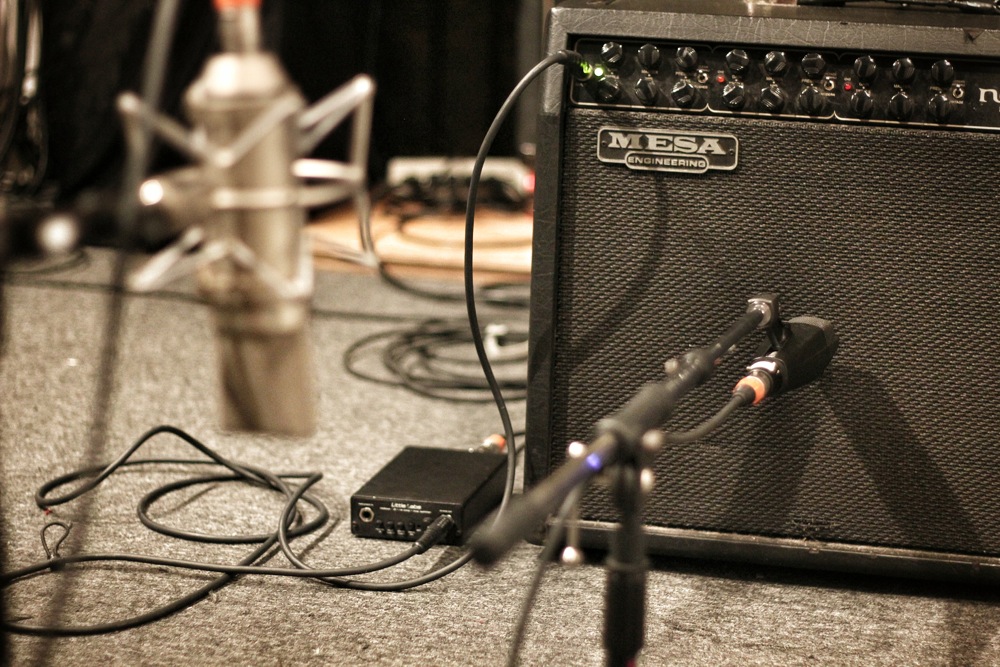
Snare Drum
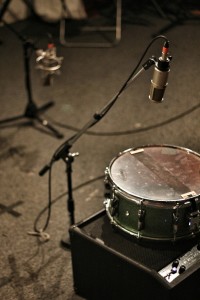 This is what some people call 'old school drum replacement'. The idea is that you use a speaker to excite a drum and then capture the resulting faux-hits. Commonly people do this with snare drums but I'm sure you could also do it with toms or even a kick (might need a bass amp to do that one).
This is what some people call 'old school drum replacement'. The idea is that you use a speaker to excite a drum and then capture the resulting faux-hits. Commonly people do this with snare drums but I'm sure you could also do it with toms or even a kick (might need a bass amp to do that one).
Here's my original drum mix.
Now to reamp the snare, I duplicated my snare track and processed it with a good amount of high and low pass filtering along with a pretty brutal gate, I only want to send the transient out into the amp not the bleed from the hihat or kick. Here's what that sounds like.
Then place the drum on top or in front of the amp and let it rip. Here’s just the reamped signal.
Here’s the drum mix with reamped snare in there too.
We went from a small thin snare sound to a nice big roomy snare sound. I used the Heil PR30 to capture the close up sound (which sounds like a bottom snare mic since that's what it is looking at) but the distant U87 is what's making that snare sound huge.
Reverb
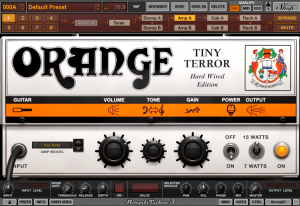 I know that earlier on I said that reamping is when you send the signal out of the box, but you can also use the reamping-creative mindset to process tracks inside the box too. Here's an example where I took the reverb return for a drum loop and put it through an amp simulator. Here’s the dry drum loop.
I know that earlier on I said that reamping is when you send the signal out of the box, but you can also use the reamping-creative mindset to process tracks inside the box too. Here's an example where I took the reverb return for a drum loop and put it through an amp simulator. Here’s the dry drum loop.
Here's the drum loop with reverb.
And here's the drum loop with "reamped" reverb.
Adds a cool vibe, right?
Go Reamp Something Already
Just like with any technique it's up to you to decide when it's appropriate to reamp and when it's unnecessary, don't go around reamping everything just because you can. Make sure you're doing it to improve the song not distracting from it. There are an infinite number of ways to apply reamping to your tracks so take these methods I showed you here and run with them and never stop experimenting.
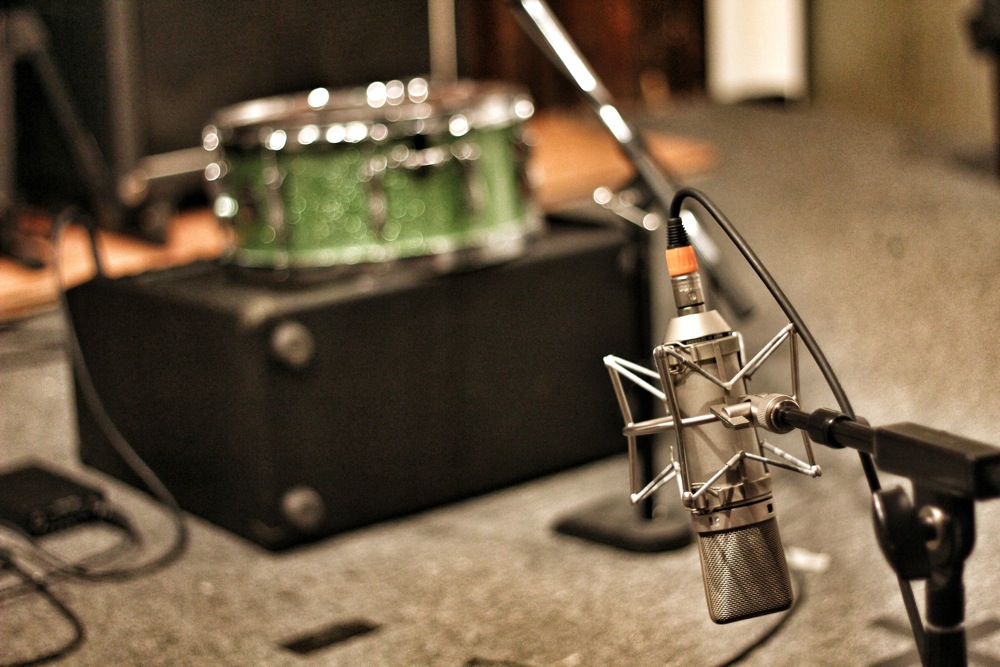
If you would like to see more, please go to Ben Lindell's blog